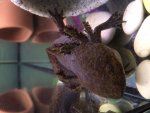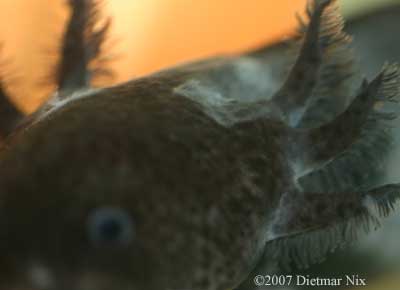It might be a fungal infection.
Treating Fungus (Salt Baths)
Fungus looks like cotton wool, fluffy, like the mold that grows on fruits. It can be fatal to an axolotl, especially if it envelops a large part of their body.
Fungus usually appears on a wound, such as if they get a foot bitten off, or a decent scratch. Here’s how to treat it!
Salt Baths!
Salt baths should be kept for only when you are certain it is fungus, as it can harm and stress your axie otherwise. To start with, try to gently remove some fungus with a cottonbud (qtip?) roll it against the fungus, gently, towards the axolotls body. If you roll against, it can pull, and tear the axolotl’s skin. It isn’t always easy to remove, so just try.
On to the salt baths
- Salt baths - Prepare a tub of fresh, dechlorinated water
- Dissolve 2-3 teaspoons of non-iodized salt such as sea salt, fresh aquarium salt, kosher salt (do not use table salt!) per litre of water. Ensure that the salt is completely dissolved before putting the axolotl in the saltbath.
- Leave axolotl in salt bath for 10 minutes, but no longer than 15 minutes as the salt will start to damage the axie’s skin and gills.... It could also be this: from photos of sick axolotls on caudata.org. White skin patches
Axolotl with white skin patches. The cause is unknown, but the owner believed it was not fungus, but a shedding problem or protozoan infection. The animal returned to normal after treatment with a tea bath (1 teabag/10 liters or 10 quarts water).





